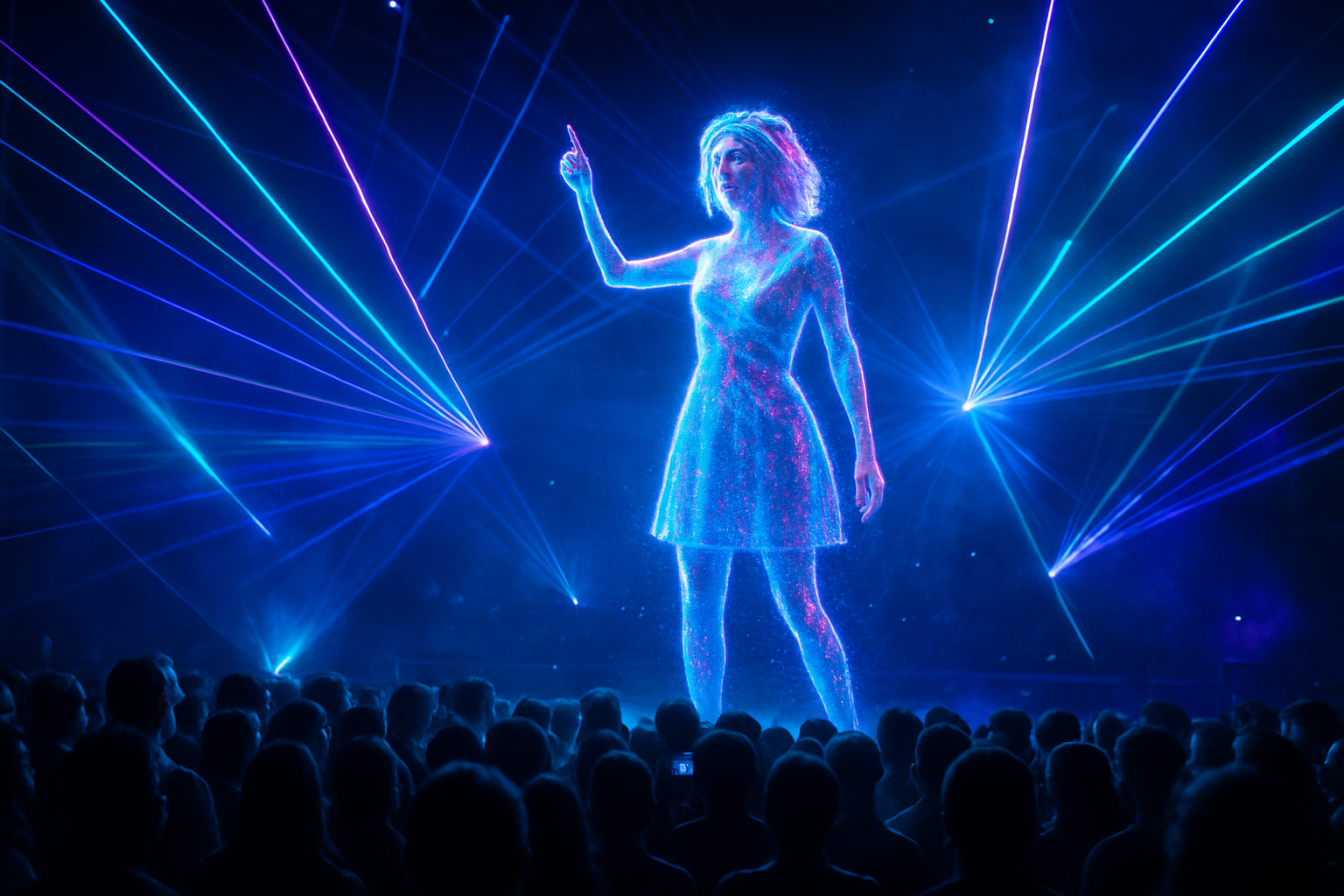Holographic Performances: Redefining Live Entertainment
In an era where technology continues to push the boundaries of artistic expression, holographic performances have emerged as a groundbreaking fusion of cutting-edge visual technology and live entertainment. This innovative medium is transforming the landscape of concerts, theater, and educational experiences, offering audiences a new way to engage with their favorite artists and historical figures. As holographic technology advances, it raises intriguing questions about the future of live performances and the nature of artistic presence in the digital age.

Beyond Resurrection: Expanding Creative Possibilities
While the initial focus was on bringing deceased artists back to the stage, holographic technology has evolved to offer much more. Contemporary artists are now using holograms to create mind-bending visual spectacles that were previously impossible in live settings. From larger-than-life projections to interactive holographic elements, performers are pushing the boundaries of what’s possible on stage. This technology allows for seamless costume changes, impossible physical feats, and the ability to be in multiple places at once, all enhancing the storytelling and visual impact of live performances.
The Technical Marvel Behind the Illusion
The creation of a convincing holographic performance involves a complex interplay of advanced technologies. High-definition projectors, specialized screens, and sophisticated motion capture systems work in concert to create the illusion of a three-dimensional presence. Recent advancements in real-time rendering and AI have further enhanced the realism of these digital performers, allowing for more natural movements and interactions with live elements on stage.
Ethical Considerations and Artistic Integrity
As holographic performances become more prevalent, they raise important ethical questions. The use of deceased artists’ likenesses has sparked debates about consent, legacy, and the posthumous exploitation of an artist’s image. For living artists, holograms offer the ability to perform in multiple venues simultaneously, but this raises concerns about the authenticity of the live experience and the potential devaluation of in-person appearances. The entertainment industry is grappling with these issues, working to establish guidelines that respect artists’ rights while embracing the creative possibilities of the technology.
The Future of Holographic Entertainment
The potential applications of holographic technology in entertainment are vast and largely unexplored. Beyond music and theater, holograms are finding their way into museums, educational institutions, and corporate events. The technology offers new ways to preserve cultural heritage, allowing historical figures to share their stories in immersive, interactive experiences. As the technology becomes more accessible and affordable, we may see a democratization of holographic content creation, enabling independent artists and smaller venues to harness its power.
Cultural Impact and Audience Reception
Holographic performances have been met with a mix of awe, skepticism, and curiosity from audiences worldwide. For many, the experience of seeing a favorite artist brought back to life or witnessing impossible feats on stage is thrilling and emotionally powerful. Others argue that holographic performances lack the spontaneity and human connection of traditional live shows. As the technology improves and becomes more commonplace, audience perceptions are likely to evolve, potentially redefining our expectations of live entertainment.
Challenges and Limitations
Despite its promise, holographic technology still faces significant challenges. The cost of producing high-quality holographic performances remains prohibitive for many, limiting its widespread adoption. Technical issues, such as the need for specific viewing angles and controlled lighting conditions, can also impact the quality of the experience. Additionally, creating convincing digital replicas of humans requires extensive work in motion capture and rendering, presenting both technical and artistic hurdles.
Holographic Performances in a Post-Pandemic World
The global pandemic has accelerated interest in alternative forms of live entertainment, with holographic performances offering a potential solution to the challenges of social distancing and travel restrictions. Virtual concerts featuring holographic performers have allowed artists to reach global audiences without the need for physical travel. As the world adapts to new realities, holographic technology may play an increasingly important role in the future of live events, offering hybrid experiences that blend physical and virtual elements.
A New Frontier in Artistic Expression
Holographic performances represent a fascinating convergence of art and technology, offering new avenues for creative expression and audience engagement. As the technology continues to evolve, it has the potential to revolutionize not just the entertainment industry, but how we preserve, share, and experience culture. While challenges remain, the possibilities are limitless, promising a future where the boundaries between the physical and digital worlds of performance become increasingly blurred, opening up new realms of artistic exploration and audience experience.





